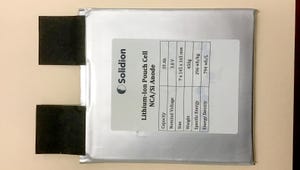GM Locks Down EV Battery Raw Materials, Secures DoE Loan
LG Chem, Livent supply-chain agreements follow on reports that the US Dept. of Energy will loan $2.5 billion to Ultium Cells, GM’s joint venture with LG Energy Solution.

General Motors and chemical company LG Chem announced on July 26 a binding agreement for the supply of Cathode Active Material (CAM) from LG Chem to GM. CAM is a key battery material consisting of components like processed nickel, lithium and other materials representing about 40% of the cost of a battery cell.
LG Chem plans to supply more than 950,000 tons of CAM to GM beginning the second half of 2022 through 2030, enough for approximately 5 million units of EV production.
The same day, GM announced with lithium supplier Livent a multi-year sourcing agreement in which Livent will supply GM with battery-grade lithium hydroxide made primarily from lithium extracted at Livent’s brine-based operations in South America.
Lithium hydroxide is crucial to GM’s plans to make higher performance, higher mileage EVs. Livent will provide battery-grade lithium hydroxide to GM over a six-year period beginning in 2025.
Almost concurrently, GM Chair and CEO shared the news in a LinkedIn feature:
“As our EV strategy scales, a question I’m often asked is: ‘How will you build enough batteries when competition for raw materials is intensifying?’ I’m proud to share GM has binding agreements securing all battery raw material to support our goal for 1 million units of annual EV capacity in North America in 2025,” Barra wrote. “This includes lithium, nickel, cobalt and full CAM supply. For example, today we announced new multi-year agreements with Livent Corp. for lithium and LG Chem for cathode material.”
These announcements follow close on the heels of news (first reported by Reuters) that the US Department of Energy (DoE) plans to loan $2.5 billion to Ultium Cells—GM’s joint venture with LG Energy Solutions—to help finance the building of new Li-ion battery manufacturing facilities in Ohio, Tennessee and Michigan.
The loan would come from the Federal Advanced Technology Vehicles Manufacturing (ATVM) loan program, which has not funded a new loan since 2010. It would be the DoE’s first loan exclusively for a battery cell manufacturing program.
About the Author(s)
You May Also Like





